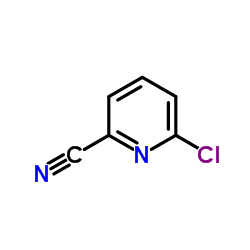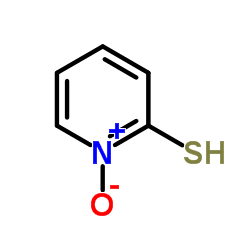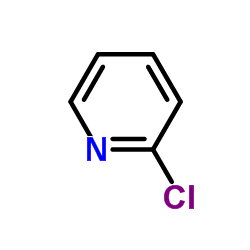2-Chloropyridine-N-oxide hydrochloride

2-Chloropyridine-N-oxide hydrochloride structure
|
Common Name | 2-Chloropyridine-N-oxide hydrochloride | ||
|---|---|---|---|---|
| CAS Number | 20295-64-1 | Molecular Weight | 166.00500 | |
| Density | 1.27g/cm3 | Boiling Point | 140-142°C | |
| Molecular Formula | C5H5Cl2NO | Melting Point | 140-142 °C(lit.) | |
| MSDS | Chinese USA | Flash Point | 141.3ºC | |
| Symbol |

GHS07 |
Signal Word | Warning | |
| Name | 2-chloropyridine n-oxide hydrochloride |
|---|---|
| Synonym | More Synonyms |
| Density | 1.27g/cm3 |
|---|---|
| Boiling Point | 140-142°C |
| Melting Point | 140-142 °C(lit.) |
| Molecular Formula | C5H5Cl2NO |
| Molecular Weight | 166.00500 |
| Flash Point | 141.3ºC |
| Exact Mass | 164.97500 |
| PSA | 25.46000 |
| LogP | 2.57050 |
| Vapour Pressure | 0.00113mmHg at 25°C |
Synonym: Section 2 - COMPOSITION, INFORMATION ON INGREDIENTS
Risk Phrases: 36/37/38 Section 3 - HAZARDS IDENTIFICATION EMERGENCY OVERVIEW
Irritating to eyes, respiratory system and skin.The toxicological properties of this material have not been fully investigated.Hygroscopic (absorbs moisture from the air). Potential Health Effects Eye: Causes eye irritation. Skin: Causes skin irritation. Ingestion: No information found. Inhalation: Causes respiratory tract irritation. Chronic: Not available. Section 4 - FIRST AID MEASURES Eyes: Flush eyes with plenty of water for at least 15 minutes, occasionally lifting the upper and lower eyelids. Get medical aid. Skin: Get medical aid. Flush skin with plenty of water for at least 15 minutes while removing contaminated clothing and shoes. Ingestion: Get medical aid. Wash mouth out with water. Inhalation: Remove from exposure and move to fresh air immediately. If not breathing, give artificial respiration. If breathing is difficult, give oxygen. Notes to Physician: Section 5 - FIRE FIGHTING MEASURES General Information: As in any fire, wear a self-contained breathing apparatus in pressure-demand, MSHA/NIOSH (approved or equivalent), and full protective gear. Extinguishing Media: Use water spray, dry chemical, carbon dioxide, or chemical foam. Section 6 - ACCIDENTAL RELEASE MEASURES General Information: Use proper personal protective equipment as indicated in Section 8. Spills/Leaks: Vacuum or sweep up material and place into a suitable disposal container. Section 7 - HANDLING and STORAGE Handling: Avoid breathing dust, vapor, mist, or gas. Avoid contact with skin and eyes. Storage: Store in a cool, dry place. Store in a tightly closed container. Section 8 - EXPOSURE CONTROLS, PERSONAL PROTECTION Engineering Controls: Facilities storing or utilizing this material should be equipped with an eyewash facility and a safety shower. Exposure Limits CAS# 20295-64-1: Personal Protective Equipment Eyes: Wear chemical splash goggles. Skin: Wear appropriate protective gloves to prevent skin exposure. Clothing: Wear a chemical apron. Respirators: A NIOSH/MSHA approved air purifying dust or mist respirator or European Standard EN 149. Section 9 - PHYSICAL AND CHEMICAL PROPERTIES Physical State: Solid Color: slightly beige Odor: Not available. pH: Not available. Vapor Pressure: Not available. Viscosity: Not available. Boiling Point: Not available. Freezing/Melting Point: 140.00 - 142.00 deg C Autoignition Temperature: Not available. Flash Point: Not available. Explosion Limits, lower: Not available. Explosion Limits, upper: Not available. Decomposition Temperature: Solubility in water: Specific Gravity/Density: Molecular Formula: C5H4ClNO.HCl Molecular Weight: 166.01 Section 10 - STABILITY AND REACTIVITY Chemical Stability: Not available. Conditions to Avoid: Exposure to moist air or water. Incompatibilities with Other Materials: Strong oxidizing agents. Hazardous Decomposition Products: Hydrogen chloride, nitrogen oxides, carbon monoxide, carbon dioxide. Hazardous Polymerization: Has not been reported. Section 11 - TOXICOLOGICAL INFORMATION RTECS#: CAS# 20295-64-1 unlisted. LD50/LC50: Not available. Carcinogenicity: 2-Chloropyridine-N-oxide hydrochloride - Not listed by ACGIH, IARC, or NTP. Section 12 - ECOLOGICAL INFORMATION Section 13 - DISPOSAL CONSIDERATIONS Dispose of in a manner consistent with federal, state, and local regulations. Section 14 - TRANSPORT INFORMATION IATA Not regulated as a hazardous material. IMO Not regulated as a hazardous material. RID/ADR Not regulated as a hazardous material. Section 15 - REGULATORY INFORMATION European/International Regulations European Labeling in Accordance with EC Directives Hazard Symbols: XI Risk Phrases: R 36/37/38 Irritating to eyes, respiratory system and skin. Safety Phrases: S 26 In case of contact with eyes, rinse immediately with plenty of water and seek medical advice. S 37/39 Wear suitable gloves and eye/face protection. WGK (Water Danger/Protection) CAS# 20295-64-1: No information available. Canada None of the chemicals in this product are listed on the DSL/NDSL list. CAS# 20295-64-1 is not listed on Canada's Ingredient Disclosure List. US FEDERAL TSCA CAS# 20295-64-1 is not listed on the TSCA inventory. It is for research and development use only. SECTION 16 - ADDITIONAL INFORMATION N/A |
| Symbol |

GHS07 |
|---|---|
| Signal Word | Warning |
| Hazard Statements | H315-H319-H335 |
| Precautionary Statements | P261-P305 + P351 + P338 |
| Personal Protective Equipment | dust mask type N95 (US);Eyeshields;Gloves |
| Hazard Codes | Xi:Irritant; |
| Risk Phrases | R36/37/38 |
| Safety Phrases | S26-S37/39 |
| RIDADR | UN 2811 6.1/PG 3 |
| WGK Germany | 3 |
| HS Code | 2933399090 |
| HS Code | 2933399090 |
|---|---|
| Summary | 2933399090. other compounds containing an unfused pyridine ring (whether or not hydrogenated) in the structure. VAT:17.0%. Tax rebate rate:13.0%. . MFN tariff:6.5%. General tariff:20.0% |
|
The Escherichia coli ynfEFGHI operon encodes polypeptides which are paralogues of dimethyl sulfoxide reductase (DmsABC).
Arch. Biochem. Biophys. 418(2) , 205-16, (2003) The ynfEFGHI operon is a paralogue of the Escherichia coli dmsABC operon. ynfE and ynfF are paralogues of dmsA. ynfG and ynfH are paralogues of dmsB and dmsC, respectively. YnfI (dmsD) has no dms para... |
|
|
Orally bioavailable nonpeptide vitronectin receptor antagonists containing 2-aminopyridine arginine mimetics.
Bioorg. Med. Chem. Lett. 9(13) , 1801-6, (1999) A peptide RGD analog containing a novel 2-aminopyridine arginine mimetic was discovered to have good affinity and selectivity for the vitronectin receptor. Incorporation of the 2-aminopyridine arginin... |
|
|
Argatroban analogs: synthesis, thrombin inhibitory activity and cell permeability of aminoheterocyclic guanidine surrogates. Misra RN, et al.
Bioorg. Med. Chem. Lett. 4(18) , 2165-70, (1994)
|
| 2-chloro-pyridine-1-oxide,hydrochloride |
| chloride 2-chloropyridinium 1-oxide |
| 6-chloro-2,3-dihydropyridin-3-one hydrochloride |
| 2-Chloropyridine 1-oxide hydrochloride |
| 3-Chloropyridine N-oxide hydrochloride |
| MFCD00012805 |
| EINECS 243-712-9 |
| 2-CHLOROPYRIDINE N-OXIDE HCL |
| 2-CHLOROPYRIDINE-N-OXIDE HYDROCHLORIDE |
| 2-Chloropyridinium chloride 1-oxide |
| 2-chloropyridine 1-oxide hidrochloride |
| N-OXY-2-CHLOROPYRIDINE HYDROCHLORIDE |
 CAS#:33252-29-8
CAS#:33252-29-8 CAS#:1121-31-9
CAS#:1121-31-9 CAS#:36316-71-9
CAS#:36316-71-9 CAS#:14432-16-7
CAS#:14432-16-7 CAS#:109-09-1
CAS#:109-09-1 CAS#:951793-84-3
CAS#:951793-84-3
